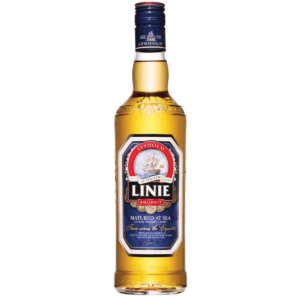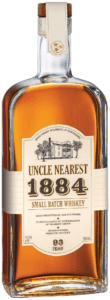
A globe trot of post-prandial sips and cheeses
When the bulky sweaters come out of storage and the sun starts setting just after lunch, our food cravings take a turn for the indulgent. Dinners get richer, desserts more frequent, and cheese starts turning up before and after meals.
Unsurprisingly, our stomachs need a little help easing this transition. From Italian amari infused with gentian to Norwegian aquavits flavored with caraway, most cultures offer a digestive coda to a big meal. Many go against prevailing pairing dogma—robust palate blasts of alcohol served beside mild sweets and cheeses—but this match-up works for reasons regional, corporeal, and practical.
“Stronger drinks can cut through the richness of something very creamy,” says Dre Horton of Sequatchie Cove Creamery in Tennessee, whose Dancing Fern is a paragon of dessert decadence. This sentiment is echoed by Violet Degnan, who represents the Ski Queen brand of Norway’s famous brown cheese, or brunost: “Strong, clean flavors cleanse the palate and renew the senses, especially after what may be a heavy, multi-course meal. After dinner, people want a final taste of unusual, invigorating flavors.”
This explains the preference for strong drink. But why, when full, do we reach for the sweet and creamy in the first place? It comes back to digestion—historically, fruit was consumed after a meal for the fiber, while the French started serving cheese for dessert because to serve it before would be an appetite spoiler. (As a sweet tooth myself, I appreciate this implication that sweets must get eaten at some point, so we might as well figure out the optimum time.)
Festive after-dinner pairings must stand up to the rich holiday foods that precede them, which is why a boozy burn is common. And when an alcohol smolder alone won’t do the trick, sometimes literal heat is introduced.
“Something warm is my way to close a great night of dinner and dessert,” says Tiffanie Barriere, Atlanta-based bartending mentor, mixologist, and founder of The Drinking Coach consulting group, who emphasizes heat in her dessert pairings: “Warm tea with cream for comfort or even a cognac neat.” This warming effect can settle the stomach, and literally warm you up—if you’ve ever gotten a chill after a big meal, that’s your body diverting blood to your stomach. This problem is solved by hot drinks the world over, from wassail to Irish coffee, and from hot toddies to quentão.
In fact, regionality plays a big role in after-dinner pairings. The ecology of a bioregion can draw symbiotic links between the diet of a dairy animal and the botanicals in the drink washing down its cheese. In the Italian and Swiss alps, cows graze the same wild herbs put to use in the region’s bitter liqueurs, while in the southern United States, whiskey distillers and cheesemakers alike attribute their products to fertile soil and abundant wildlife. Read on for a few regionally harmonic pairings to cap off a cold night.
NORWAY:
LINIE AQUAVIT + SKI QUEEN GJETOST
The cheese: The national cheese of Norway, Gjetost is made by adding cream to caramelized goat’s and/or cow’s milk whey. Created by Anne Olsdotter Kvålen in 1863, the recipe produces a dense, silky square the color and flavor of butterscotch that Norwegians like to shave onto toast or baked goods (though you can also eat it straight like candy).
The drink: What better pairing for Norway’s favorite cheese than its favorite drink? “Gjetost is creamy…which pairs well with spicy and savory Aquavit,” said Degnan, of Ski Queen. This 200-year-old recipe infuses a potato spirit with Nordic herbs like caraway and star anise, then ages it in Oloroso sherry casks for 16 months at sea. Initially bracing, its vanilla finish provides an ideal epilogue to dinner.

UNITED KINGDOM:
WASSAIL + COLSTON BASSETT STILTON
The cheese: Mongers are familiar with the holiday blue cheese bump, and no one sees more action in the case than the Colston Bassett Stilton, a cow’s milk cheese made in Nottinghamshire, UK. Its buttery paste and peacock-blue veins turn a cheese plate into a party, and the juicy fruit notes lend themselves to endless dessert pairings.
The drink: In the grand tradition of constitution-saving nightcaps, wassail has it right in the name. Derived from the Middle English “waes hael” (“be thou hale”), this spiced citrusy cider was traditionally enjoyed during a pagan Yuletide ritual of blessing the orchards. With or without brandy, its warming spices make a great companion to blue cheese.
TENNESSEE:
UNCLE NEAREST 1884 SMALL BATCH WHISKEY + SEQUATCHIE COVE CREAMERY’S DANCING FERN
The cheese: Modeled after the Savoie classic Reblochon, Dancing Fern is a supple washed rind named for the greenery that abounds in Coppinger Cove, Tennessee, where it’s made. Dipped in a vinegar-infused brine bath and aged until pudding-like, this five-time ACS winner gracefully toes the savory-sweet line at dessert time.
The drink: Tennessee sits on one of the largest limestone deposits in the world, a natural filtration system that makes the state’s whiskeys notably smooth—perfect for sipping neat after a big meal. Created to honor Nearest Green, the enslaved man who taught Jack Daniel how to distill, Uncle Nearest 1884 is a dessert in itself replete with notes of toffee, wild honey, and caramel corn.
ITALY:
COCCHI BAROLO CHINATO + LA TUR
The cheese: Aptly packaged in a cupcake wrapper to contain its mousse-like body, La Tur is an excellent match for many digestivos. Crafted in the Piedmont region of northern Italy from a mix of thermalized sheep’s, cow’s, and goat’s milk, the brain-like folds of its geotrichum rind encase a silky cream line and fudgy center that softens as it ages.
The drink: Barolo Chinato is an elegant digestif from Piedmont, where it’s made by steeping 100% Nebbiolo with cinchona bark, gentian, bitter orange, star anise, rhubarb, cardamom, and more. Situated between a vermouth and an amaro yet somehow making both seem like training wheels, Barolo Chinato’s sophisticated complexity turns cheeses velveteen.

MEXICO:
CARAJILLO + ATE CON QUESO
The cheese: You’ll find this refreshing combo of fresh cheese and fruit paste all across Latin America—in Brazil, it’s called Romeu e Julieta; in Argentina, postre vigilante; in Uruguay, Martín Fierro. In Mexico, ate (the paste) is made with fibrous fruits like quince, apple, or guava and served with fresh, salty quesos asadero, chihuahua, or Oaxaca for a treat light enough to conclude any dinner.
The drink: The star ingredient in this espresso cocktail is Licor 43, a Cartagenian spirit made of 43 mysterious botanicals known only to include citrus and vanilla. Surely one of these secret herbs soothes a full belly, but luckily a carajillo blends it with an old dessert standby (caffeine), just in case.







